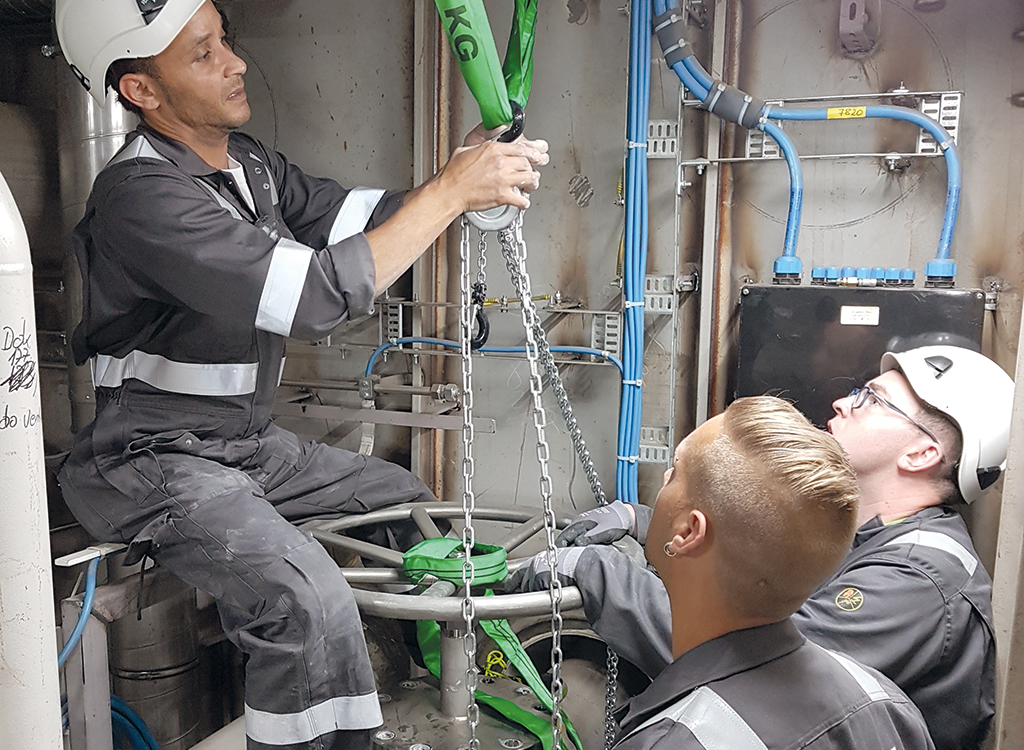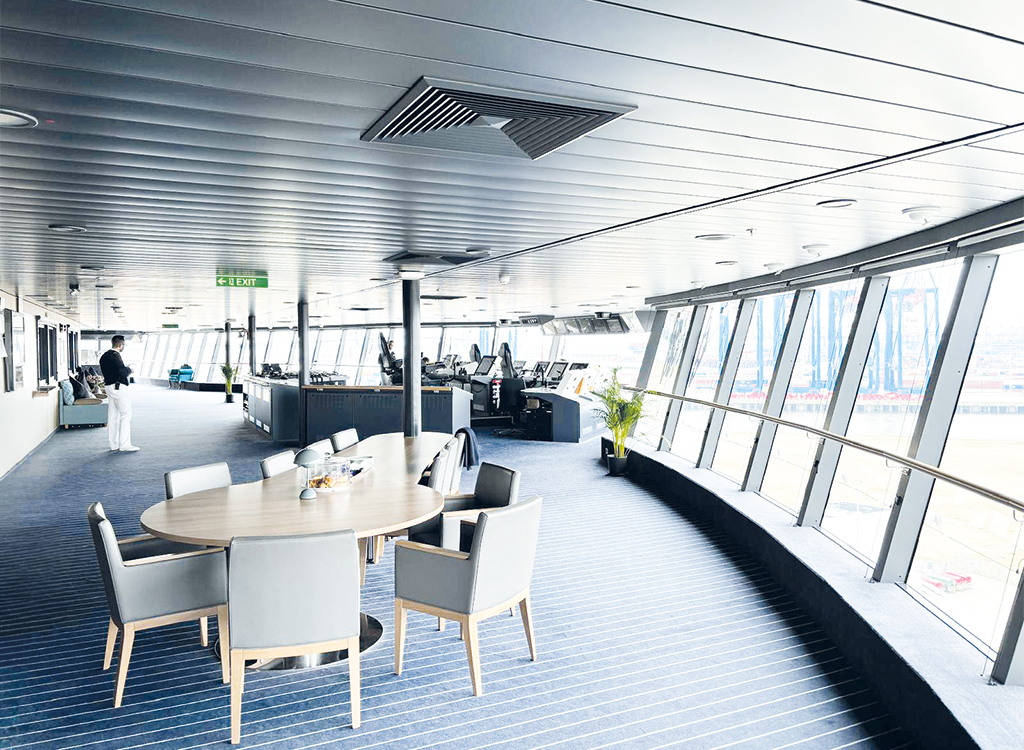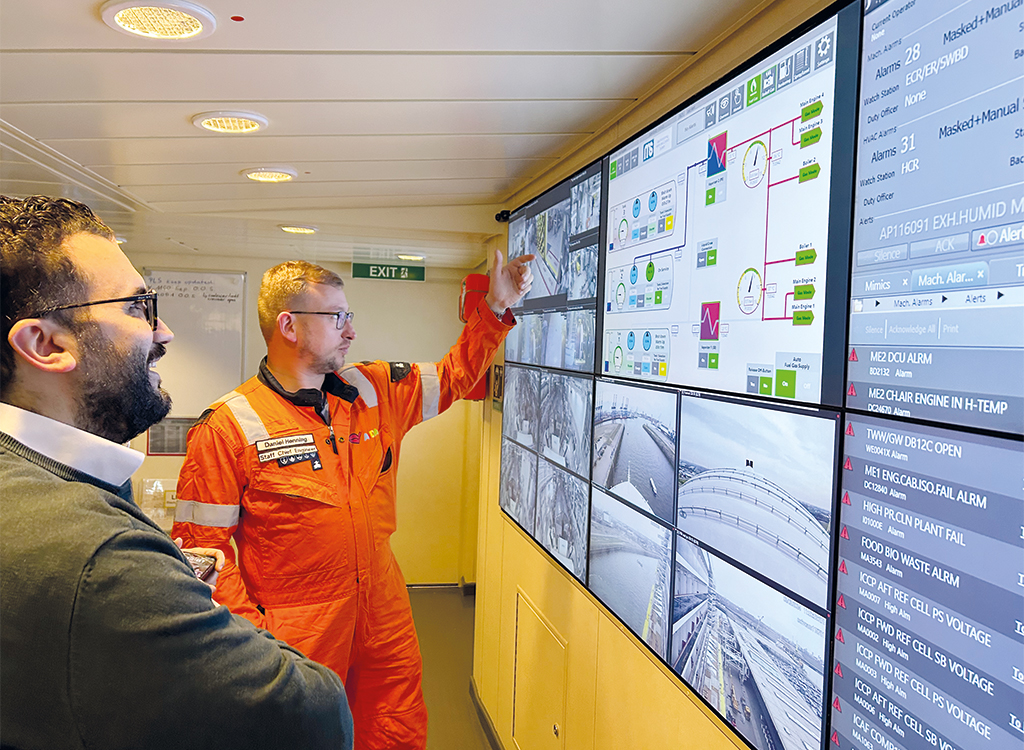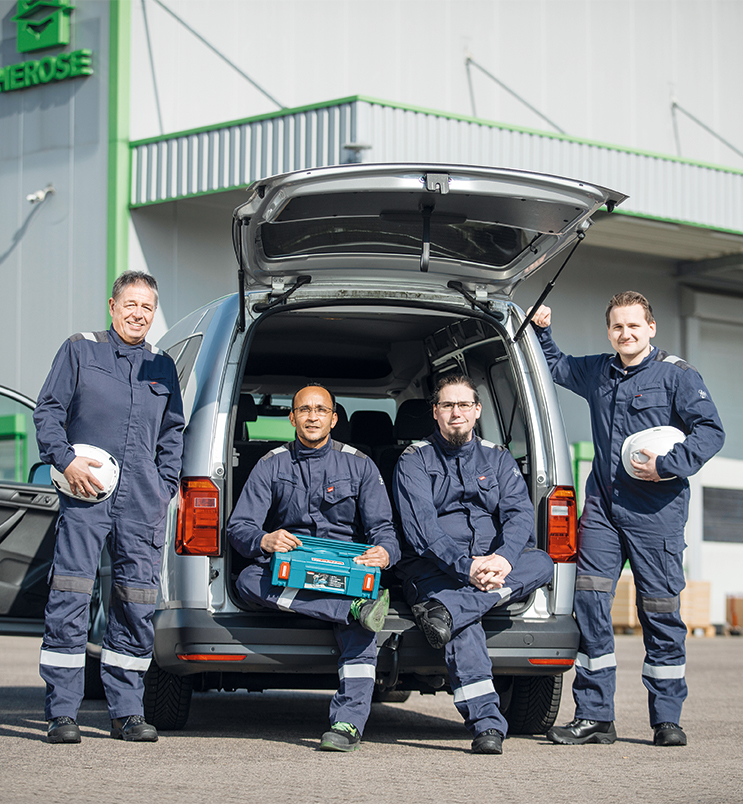The AIDAnova is the world‘s first LNG cruise ship. Five years after being in operation, a thorough inspection was carried out and the numerous HEROSE valves being used on board were serviced.
Holiday dreams are made to come true by AIDA Cruises and the company is constantly working to make its ships more environmentally friendly. Captain Boris Becker has accompanied the AIDAnova since it had been under construction: “We were the only ones with LNG propulsion on a cruise ship five years ago. We were pioneers in the technology.“ As a fuel, LNG is more environmentally friendly due to lower emissions of greenhouse gases and pollutants.
Pit stops at full speed
With its impressive size, around 2600 cabins, 17 restaurants, bars, water slides, spa and sports area on board, the ship is a small floating city. With a length of 337 metres, it is currently the seventh largest cruise ship in the world. A total of around 350 HEROSE valves are installed on board, i.e. more than one valve per metre of ship length. The HEROSE valves in the gas system fulfil important tasks: shut-off, control, pressure regulation, temperature regulation, emergency shutdown (ESD), storage tank management, venting, safety relief and LNG bunkering. The maintenance inspection, including the mandatory servicing of the valves, which is required every five years, took place during the ongoing operation – holidaying above and servicing below. This is only possible because passenger ships feature a high level of redundancy – also for safety reasons. Crucial technical equipment is duplicated as a minimum. This means that part of the system can be temporarily dispensed with.
Liquefied natural gas (LNG) as a fuel – for environmental reasons
The LNG cruise ship AIDAnova operates with liquefied natural gas, which is bunkered every two weeks in Rotterdam. Then the bunkering ship comes alongside, the connections are made and the outside of the ship is closed off for refuelling. There are three tanks, two large and one small. Fully fuelled, the ship can travel around 4000 nautical miles. At minus 162 °Celsius the cryogenic LNG is a challenge to handle and store on board. However, Daniel Henning, the ship‘s Staff Chief Engineer, says, “LNG handling is more controlled and safer than handling conventional fuel.“ There is a dedicated LNG engineer on board and the crew requires special training to operate and maintain the LNG systems. Henning has been on board from the very beginning and was the first LNG engineer on the AIDAnova. After the ship had been successfully commissioned, engineers from the parent company‘s other marques came to the pioneer ship to learn and benefit from the experience gained.
With the AIDAnova we have put the first LNG cruise liner into service – this required some pioneering work.
Boris Becker, AIDAnova Captain
The inspection by a classification society is equivalent to the ship MOT
All technical installations are checked during a maintenance inspection, including, of course, the numerous valves in the gas and fuel systems. “If there are screws on one side, we use the other side – everything is duplicated,“ says Markus Cordes, Senior Ship Manager at Carnival Maritime GmbH. Because of the high safety precautions, good planning is an absolute necessity. The gas tanks are located in rooms with a protective atmosphere, i.e. with reduced oxygen. There are gas detectors, pressure sensors and camera monitoring in all gas areas. The engine control room is where all information is collated – this is where the gas system and the four 16-cylinder engines are controlled and monitored. All this technology is checked and serviced during the maintenance inspection.
From minus 162 °Celsius to plus 20 °Celsius and back again
The core of the gas system on the LNG cruise ship AIDAnova is the Tank Connection Space (TCS), where most of the 350 HEROSE valves and the vaporisers, which convert the liquid and cryogenic LNG back into a gaseous state and heat it to 30 °Celsius for the engines, are located. There is a Tank Connection Space for each of the three LNG tanks. For each inspection, one area is made gas-free, i.e. brought from minus 162 °Celsius to plus 20 °Celsius; only then can work be carried out on the system and the valves. After the inspection work, the cryogenic LNG from one of the other two tanks, which has already been inspected, is used to cool down again. The temperature drops by around 10 °Celsius in an hour – from plus 20 °Celsius to minus 162 °Celsius, and this takes a good 20 hours.
Working where others spend their holidays
Matthias Reinhardt, Head of customer service at HEROSE, planned the service deployment for the valves on board the AIDAnova and successfully carried it out in all three TCSs. The applicable class regulations stipulate that the soft seals of all valves must be replaced after five years. In order to do this, the screw connection on the valve housing is loosened and the body is opened. A relatively large amount of dismantling is required to access the main sealing element. The stuffing box packing can now be replaced and the valve disc or cone replaced. Some valve seats have also been reground. Mobile chain hoists are used to handle large valves such as DN200. Two HEROSE valve specialists worked on the ship for several weeks.
Four times 20,998 horsepower propel the LNG cruise ship
The AIDAnova is equipped with four Caterpillar 16-cylinder engines producing a total output of 61,760 kW or 83,970 hp. These are dual-fuel engines, which make it possible to switch between LNG and conventional marine diesel (MGO) without interruption and under load. Although the different fuels have different densities and calorific values, the engines deliver approximately the same maximum power with either of the fuels. The gas system supplies fuel gas at a pressure of 7 to 11 bar (g) to the gas valve unit of the engines. Due to the low ignition quality of natural gas, a small amount of MGO must be injected as pilot fuel to produce a flame that ignites the gas-air mixture in the cylinder.
A rudderless LNG cruise ship that is extremely manoeuvrable
The ship‘s propulsion system consists of two propeller nacelles, so-called azipods. The Azipod systems are electrically powered, with neither a gearbox nor a classic propeller shaft. The propeller nacelles are attached to the ship‘s hull and can be rotated 360 degrees, so the ship does not need a rudder. The electric motor of each Azipod has an output of 18,500 kW. The Azipods are a little slower to pick up loads, so anticipatory steering is necessary. In combination with the four bow thrusters, the AIDAnova is very manoeuvrable and can in most cases moor and cast off without tug assistance.
We successfully completed the maintenance inspection thanks to our experienced crew.
Markus Cordes, Senior Ship Manager AIDAnova + AIDAcosma
Energy saving as a future topic
The Energy Saving department at AIDA Cruises examines where there is potential for improvement and what the next measures could be. Where can heating or cooling be integrated into the ship‘s energy cycles? For example, there are plans to switch the pilot fuel for the main engines to bio-diesel or methanol. Research is being carried out to see which approach is most promising. For example, as a test object, the AIDAnova has a small fuel cell on board to find out how knowledge of this topic can be expanded. HEROSE is also working on these pioneering topics and is already able to offer many solutions.
AIDA Cruises
AIDA Cruises is part of the Carnival Corporation and currently operates 11 cruise ships, including the AIDAnova, which entered service at the end of 2018. The vessel was the first cruise ship to be awarded the Blue Angel in 2019. AIDA plans to operate its fleet in an emissions-neutral manner by 2050.
Photos: Carsten Blatt






 Read the current digital customer magazine now!
Read the current digital customer magazine now!
